An economic downturn is, on paper, the ideal environment for canned goods. Thrift-friendly and with a long shelf life, they should be thriving – but they’re not. Why, asks Guy Sheppard
The fortunes of canned goods are usually the inverse of the economy's. So the current economic turmoil should provide the perfect climate for canned goods to thrive.
But, against expectations, the sector is faltering. Value growth year-on-year has slowed to 1.7% compared with 4% last year and volumes have dipped 0.3% following last year's marginal 0.2% rise [Kantar Worldpanel 52w/e 17 April 2011]. These figures look even more lacklustre when compared with the 4.1% rise in value of overall ambient groceries. So what's going on?
Clearly, format innovations haven't helped, with pouches, sachets, cartons and squeezy bottles all now vying with the can and its old rival, the glass jar for shelf-space. Just this month, Heinz, one of the largest producers of canned goods, unveiled a new Squeeze & Stir range of instant soups (rsp: 59p for 70g) that it claims will revolutionise the cup soup sector. The move follows the launch of its resealable Heinz Beanz Fridge Pack, last June and, says the company, reflects its desire to offer consumers greater convenience and the chance to reduce waste. But there is more to this sudden proliferation of pack formats than that.
Value growth in the canned category can be almost entirely attributed to price rises caused by commodity cost hikes, according to Kantar. For a format that has built its near 100% household penetration on the foundations of value for money, it does not bode well and as the slippage in volume sales attests, the tipping point may well have been reached.
One issue is the rising cost of tinplate. In Europe, the average cost rose 16% in 2010 and has peaked this year at £837/tonne, up 28% on 18 months ago [Mintec].
If soaring tinplate costs weren't bad enough, "this is just one rising cost in an environment where raw materials are experiencing significant cost increases," adds Stuart Galbraith, senior client manager at Nielsen.
The cost of the contents has also risen sharply as has that of other formats. "It's been a tough economic climate," agrees Nick Wheater, technical and innovation director at Baxters. "Increased costs have led to unavoidable price rises across a range of commodities."
Take sweetcorn, for example. Fine foods distributor RH Amar forecasts that its cost price will rise by at least 11% this year because of adverse weather conditions in the northern hemisphere.
"I don't think the producers will be able to stand all the increases they are looking at," warns chairman Henry Amar, adding that there is similar pressure facing carrots and green vegetables.
These factors will only make a bad situation worse. Vegetable volumes have slumped 3.1% over the past 12 months but that's nothing compared to sales of canned fish, which have tumbled 6.1% [Kantar].
This can largely be attributed to rising prices. The average unit price of canned tuna rose by 7% last year, to £1.63 and over the past three years it has risen 48% [SymphonyIRI 52w/e 11 June 2011]. Similarly, the price of salmon has risen 30% since 2008, to £1.75.
"There are a number of factors affecting the price of tuna, including the global increase in demand and certain ecological issues such as the Pacific Ocean tsunami which have affected certain fishing areas, causing demand to shift elsewhere," explains Neil Brownbill, marketing director at Princes.
But not all brands have been adversely affected. While John West suffered a 15.3% fall in value, its rival Princes bucked the downward trend in fish, increasing its value by 13.3% [SymphonyIRI 52w/e 14 May 2011]. Brownbill attributes this partly to the success of an on-pack promotion to win, amongst other prizes, a holiday in Mauritius. "So far we have received 50,000 entries," he says.
Brownbill also believes value-saving promotions and advertising activity have helped Princes gain ground. The brand is "committed to supporting the category and our retailers by offering consumers a programme of multibuy savings, on-pack offers and everyday low prices", he says, adding that a £1.5m above-the-line campaign will be launched later this summer to build on recent sales growth.
Canned meats have been hit as hard as fish, with demand for Brazilian beef in particular proving a source of inflationary pressure. The average unit price of canned corned beef has jumped by 71% to £1.66 over the last three years [SymphonyIRI].
Canned ham has risen 42% in price over the same period, to £1.39, but offers value for money in the context of beef price rises. "Consumers are turning to chopped pork and ham as a substitute [for corned beef], so our sales are doing well," says Marianne Pollock, international marketing manager at Hormel Foods, which owns Spam.
The supermarkets are all too aware of the severity of the price inflation issue. Morrisons claims it is absorbing most of the cost hikes but admits it has had to pass on some costs to consumers, an unfortunate result of the "unprecedented situation".
One approach among retailers has been to place a greater emphasis on promotions. Along with Sainsbury's, Tesco has increased promotions by well over 100 in the last year [Assosia]. A spokesperson for the company says its offers have proved "extremely popular at a time when, on average, customers have less disposable income than a year ago".
Not everyone has ramped up their promotions, though. Morrisons has actually cut its promotional activity around canned goods by 34, although it still ran significantly more than some [Assosia].
John Cannan, vegetable and beans buyer at Morrisons, says feedback from customers showed they wanted fixtures to be as simple as possible and that the key was the depth of promotions rather than the number. "We have delivered fewer, bigger, better promotions to meet customer needs," he says.
This sort of strategy may provide a short-term fix but it's not a lasting solution for a category whose prospects look decidedly bleak. Although Heinz insists its new formats do not indicate a wider strategy to downgrade its reliance on cans, the rising cost of tin will cause manufacturers to consider exploring alternative packaging options.
Nielsen's Galbraith suggests environmental pressure will also affect the can's future. "As companies become more interested in their green footprints, they are also looking for lighter packaging options that help to reduce transport costs and resultant emissions," he says.
The use of Tetra Pak for tomatoes is one example. Sandra Sangiuolo, Cirio's international marketing director, detects growing interest in this format. "Recently, a major retailer asked for quotes to convert a number of canned references into Tetra Pak. Something is moving," she says.
However, Galbraith believes it is highly unlikely that this format will overtake cans in the short term. Richard Reardon, Morrisons' canned meat buyer, is equally sceptical about plastic pouches, touted as another possible replacement. "Customers have struggled to understand the concept of pouches," he says.
There will always be a market for canned goods, agrees Malton Foods, one brand showing no signs of abandoning the format. Last autumn, the company rebranded its Tyne Value canned meats line, first launched in 1903, as Tyne Classic.
Perhaps the clearest indication that the can is down, but not out, is the news that Campbell's Condensed Soups will be back on UK shelves next week for the first time in over three years (see p26).
The can is putting up a good fight, but there is no denying the pressure the category is under, challenged by more modern formats and at the mercy of commodity price rises. Without innovation, clever pricing and a solid long-term strategy, we may find ourselves witnessing the first throes of a long, slow death.
Focus On Canned Goods
The fortunes of canned goods are usually the inverse of the economy's. So the current economic turmoil should provide the perfect climate for canned goods to thrive.
But, against expectations, the sector is faltering. Value growth year-on-year has slowed to 1.7% compared with 4% last year and volumes have dipped 0.3% following last year's marginal 0.2% rise [Kantar Worldpanel 52w/e 17 April 2011]. These figures look even more lacklustre when compared with the 4.1% rise in value of overall ambient groceries. So what's going on?
Clearly, format innovations haven't helped, with pouches, sachets, cartons and squeezy bottles all now vying with the can and its old rival, the glass jar for shelf-space. Just this month, Heinz, one of the largest producers of canned goods, unveiled a new Squeeze & Stir range of instant soups (rsp: 59p for 70g) that it claims will revolutionise the cup soup sector. The move follows the launch of its resealable Heinz Beanz Fridge Pack, last June and, says the company, reflects its desire to offer consumers greater convenience and the chance to reduce waste. But there is more to this sudden proliferation of pack formats than that.
Value growth in the canned category can be almost entirely attributed to price rises caused by commodity cost hikes, according to Kantar. For a format that has built its near 100% household penetration on the foundations of value for money, it does not bode well and as the slippage in volume sales attests, the tipping point may well have been reached.
One issue is the rising cost of tinplate. In Europe, the average cost rose 16% in 2010 and has peaked this year at £837/tonne, up 28% on 18 months ago [Mintec].
If soaring tinplate costs weren't bad enough, "this is just one rising cost in an environment where raw materials are experiencing significant cost increases," adds Stuart Galbraith, senior client manager at Nielsen.
The cost of the contents has also risen sharply as has that of other formats. "It's been a tough economic climate," agrees Nick Wheater, technical and innovation director at Baxters. "Increased costs have led to unavoidable price rises across a range of commodities."
Take sweetcorn, for example. Fine foods distributor RH Amar forecasts that its cost price will rise by at least 11% this year because of adverse weather conditions in the northern hemisphere.
"I don't think the producers will be able to stand all the increases they are looking at," warns chairman Henry Amar, adding that there is similar pressure facing carrots and green vegetables.
These factors will only make a bad situation worse. Vegetable volumes have slumped 3.1% over the past 12 months but that's nothing compared to sales of canned fish, which have tumbled 6.1% [Kantar].
This can largely be attributed to rising prices. The average unit price of canned tuna rose by 7% last year, to £1.63 and over the past three years it has risen 48% [SymphonyIRI 52w/e 11 June 2011]. Similarly, the price of salmon has risen 30% since 2008, to £1.75.
"There are a number of factors affecting the price of tuna, including the global increase in demand and certain ecological issues such as the Pacific Ocean tsunami which have affected certain fishing areas, causing demand to shift elsewhere," explains Neil Brownbill, marketing director at Princes.
But not all brands have been adversely affected. While John West suffered a 15.3% fall in value, its rival Princes bucked the downward trend in fish, increasing its value by 13.3% [SymphonyIRI 52w/e 14 May 2011]. Brownbill attributes this partly to the success of an on-pack promotion to win, amongst other prizes, a holiday in Mauritius. "So far we have received 50,000 entries," he says.
Brownbill also believes value-saving promotions and advertising activity have helped Princes gain ground. The brand is "committed to supporting the category and our retailers by offering consumers a programme of multibuy savings, on-pack offers and everyday low prices", he says, adding that a £1.5m above-the-line campaign will be launched later this summer to build on recent sales growth.
Canned meats have been hit as hard as fish, with demand for Brazilian beef in particular proving a source of inflationary pressure. The average unit price of canned corned beef has jumped by 71% to £1.66 over the last three years [SymphonyIRI].
Canned ham has risen 42% in price over the same period, to £1.39, but offers value for money in the context of beef price rises. "Consumers are turning to chopped pork and ham as a substitute [for corned beef], so our sales are doing well," says Marianne Pollock, international marketing manager at Hormel Foods, which owns Spam.
The supermarkets are all too aware of the severity of the price inflation issue. Morrisons claims it is absorbing most of the cost hikes but admits it has had to pass on some costs to consumers, an unfortunate result of the "unprecedented situation".
One approach among retailers has been to place a greater emphasis on promotions. Along with Sainsbury's, Tesco has increased promotions by well over 100 in the last year [Assosia]. A spokesperson for the company says its offers have proved "extremely popular at a time when, on average, customers have less disposable income than a year ago".
Not everyone has ramped up their promotions, though. Morrisons has actually cut its promotional activity around canned goods by 34, although it still ran significantly more than some [Assosia].
John Cannan, vegetable and beans buyer at Morrisons, says feedback from customers showed they wanted fixtures to be as simple as possible and that the key was the depth of promotions rather than the number. "We have delivered fewer, bigger, better promotions to meet customer needs," he says.
This sort of strategy may provide a short-term fix but it's not a lasting solution for a category whose prospects look decidedly bleak. Although Heinz insists its new formats do not indicate a wider strategy to downgrade its reliance on cans, the rising cost of tin will cause manufacturers to consider exploring alternative packaging options.
Nielsen's Galbraith suggests environmental pressure will also affect the can's future. "As companies become more interested in their green footprints, they are also looking for lighter packaging options that help to reduce transport costs and resultant emissions," he says.
The use of Tetra Pak for tomatoes is one example. Sandra Sangiuolo, Cirio's international marketing director, detects growing interest in this format. "Recently, a major retailer asked for quotes to convert a number of canned references into Tetra Pak. Something is moving," she says.
However, Galbraith believes it is highly unlikely that this format will overtake cans in the short term. Richard Reardon, Morrisons' canned meat buyer, is equally sceptical about plastic pouches, touted as another possible replacement. "Customers have struggled to understand the concept of pouches," he says.
There will always be a market for canned goods, agrees Malton Foods, one brand showing no signs of abandoning the format. Last autumn, the company rebranded its Tyne Value canned meats line, first launched in 1903, as Tyne Classic.
Perhaps the clearest indication that the can is down, but not out, is the news that Campbell's Condensed Soups will be back on UK shelves next week for the first time in over three years (see p26).
The can is putting up a good fight, but there is no denying the pressure the category is under, challenged by more modern formats and at the mercy of commodity price rises. Without innovation, clever pricing and a solid long-term strategy, we may find ourselves witnessing the first throes of a long, slow death.
Focus On Canned Goods




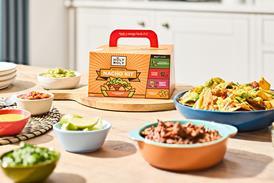


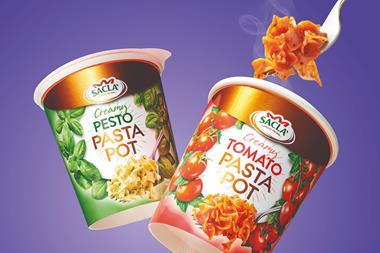
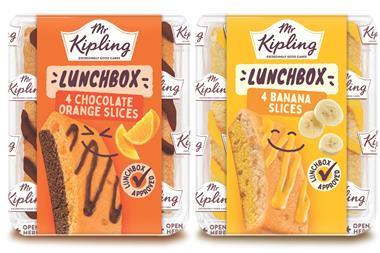



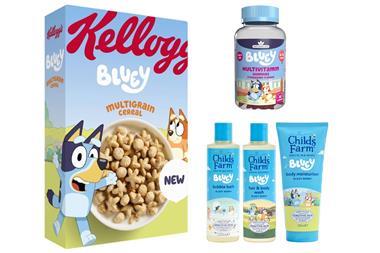

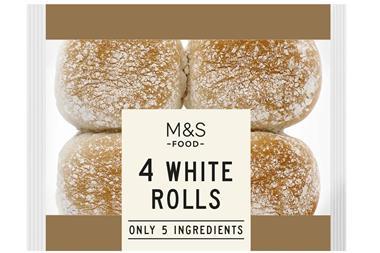



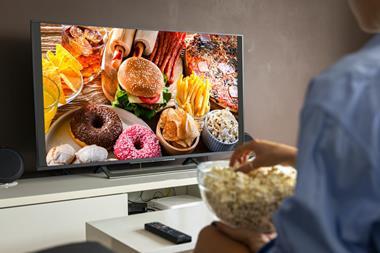
No comments yet